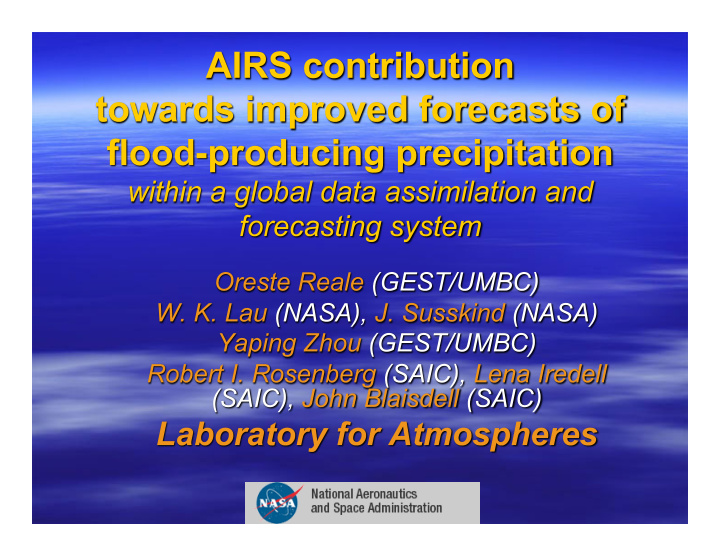



Anomaly Correlations computed from 90S to 90N
Control AIRS clear-sky radiances AIRS cloudy retrievals
USED REJECTED There are simply NO DATA accepted by the DAS in the area where NARGIS developes, because the measurements are in cloudy areas.
Slp RAD analysis (contour) RAD slp impact (shaded) X: observed Helene position 300 hPa Temp Impact (ret minus Control, shaded) And slp impact (contour) Slp RET analysis (contour) AIRS TIGHT RET produces a PERFECT RETRIEVALS slp impact (shaded) position for Helene and a deeper storm
Comparison Of 36-h Forecasts of AIRS TIGHT RET (lower left) with AIRS RAD (upper right) Forecasts from Analysis in which AIRS TIGHT RET are assimilated improve Helene’s Formation as a hurricane (12z 16Sep). Improvement is minimal in RAD case
RAD slp analysis (contour) And difference from CNTRL.. Negative impact From assimilation of clear-sky Radiances. 400 hPa AIRS RET-induced Temp anomaly (shaded) And impact on slp (contour) AIRS RET improves location and intensity also at AIRS RET slp analysis (contour) subsequent times; FORECASTS from the improved and difference from CNTRL (shaded) analyses are much superior.
800 hpa relative humidity, sea level pressure (hPa) RADIANCE CNTRL NCEP RETRIEVALS Operational Display an Analyses, Eye-like Very poor feature
Radiances: very poor structure: Retrievals: Realistic 2-band Two unconnected convective systems structure comparing well with without a deep circulation satellite Retrievals Much Radiances higher Very weak (100%) System, low Vorticity Vorticity
OBS CNTRL AIRS RAD AIRS RET
Primary Peak of Precip precip Second Maximum Peak of Precip precip Maximum Maximum Flood Maximum Severity Flood Severity
Underestim. Prec Peak Precip Peak SW of Peshawar The precip SW of Peshawar Improves of 60% As a consequence Of AIRS retrievals ingestion
Recommend
More recommend